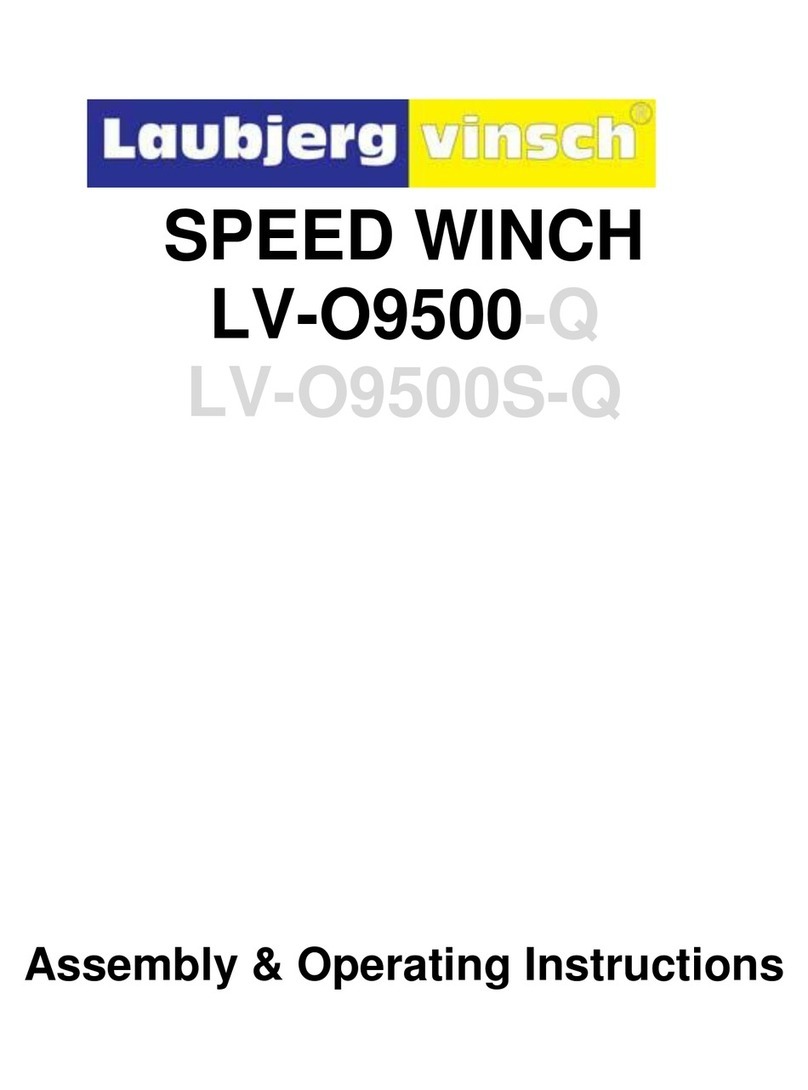k. Disengage the clutch to allow free-spooling and to save energy.
l. Inspect the wire rope. Make sure there are at least 5 wraps of wire rope around the
winch drum.
m. Drape a blanket or jacket over the wire rope approximately 5 to 6 feet from the
hook. Open the hood for added protection.
n. Clear the area. Make sure all spectators are back and that no one is directly in
front or behind the vehicle or anchor point.
o. Begin winching. Be sure that the wire rope is winding evenly and tightly around the
drum. The vehicle that is being winched can be slowly driven to add assistance to the
winching process. Avoid shock loads; keep the wire rope under tension.
p. The vehicle to be winched should be placed in neutral and the emergency brake
released. Only release the brake pedal when under full tension. Avoid shock loads to
the winch. This can damage the winch, rope and vehicle.
q. The winch is meant for intermittent use. Under full load with a single line rig do not
power in for more than a minute without letting the motor cool down for a few minutes
and then resume the winching operation.
r. The winching operation is complete once the vehicle is on stable ground and is able
to drive under its own power.
s. Secure the vehicle. Be sure to set the brakes and place the vehicle in park.
t. Release the tension on the wire rope. The winch is not meant to hold the vehicle for
long periods of time.
u. Disconnect the wire rope from the anchor.
v. Rewind the wire rope. Make sure that any wire already on the drum has spooled
tightly and neatly. If not, draw out the wire and re-spool from the point where the rope
is tight.
w. Keep your hands clear of the winch drum and fairlead as the wire rope is being
drawn in.
x. Secure the hook and hook strap.
y. Disconnect the remote control and store in a clean, dry place.
z. Clean and inspect connections and mounting hardware for next winching operation.





























